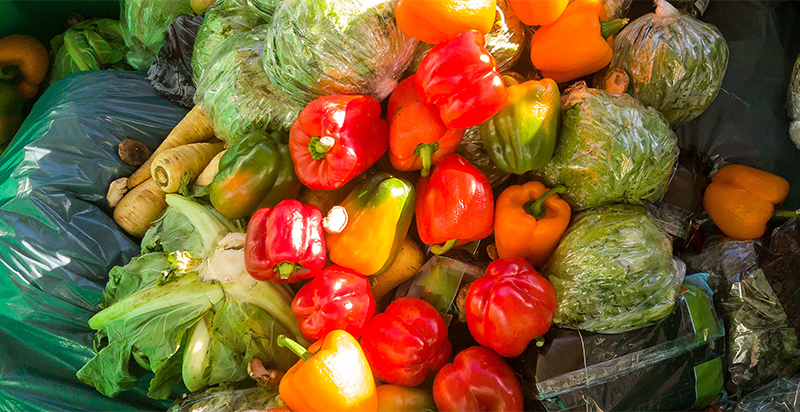Why does so much food go to waste asks Max Winograd
Earlier this year, research firm Coresight conducted exclusive interviews with 219 leading grocery retailers in North America to discuss the issue of food waste. The findings were shocking. A massive 30 percent of all food in the US grocery sector is thrown away – whilst an estimated 50 million Americans will face food insecurity this year. Campaigning group WRAP suggests in the UK, the food waste figure could be even higher at 40 percent.
The retailers estimated that this would lose them a collective $21 billion in net income annually and incur extra costs to the tune of $2.1 billion just to dispose of 40 million tons of waste. Whilst of course this report is only a snapshot of North America, the issues are global and according to UN estimates a third of the world’s food is either lost in the supply chain or wasted at the retail, food service and household level. That’s about 1.3 billion tons a year.
What needs to change? The Coresight report suggests that retailers in North America are on the right path. Firstly, they are committed to action with nine in ten stating that reducing food waste is important for reaching their sustainability goals and 72 percent have set sustainability goals specific to food waste. Secondly, they’ve also committed to investing in technology with 84 percent committing budget to waste savings within two years. These technologies include AI-based demand forecasting (stated by 25 percent), electronic shelf labeling (17 percent), RFID tags and active intelligence packaging (15 percent), blockchain (14 percent) and edible coatings to extend product shelf life (ten percent).
Item level tracking is key
What many of these technologies have in common is the ability to isolate products down to an individual item level. Currently, in most cases the tracking of food products through the supply chain and then to the retailer is done either via barcodes or RFID on pallet or container level. Both approaches are tried and tested. They have been the mainstay of the industry for decades and largely effective, but there is an intelligence gap. Barcodes for instance only identify products at a SKU level, it won’t tell the retailer about the age of the products on the shelf. RFID tagging of products at pallet level is a significant step up from just relying on barcodes. However, individual items will get separated once in store, or in the warehouse in which cases they then become ‘lost’ to the overall system.
This is why tagging at item level is so important. By providing every item with a ‘digital identity’ it becomes a source of data which can be analyzed in a connected product cloud to alert on anomalies and inefficiencies across the supply chain. This can include information about the overdue movement of products at a pallet level or even isolated individual items within a warehouse that are close to perishing or otherwise ‘lost’. Temperature variance alerts can also be introduced, further helping to minimize spoilage and reduce waste.
Legislation is starting to bite
Legislation is increasingly meaning that the above becomes a necessity. The US Food Safety Modernization Act for instance mandates that it has the right to recall all food products. It also specifies that: “for the first time, importers must verify that their foreign suppliers have adequate preventive controls in place to ensure safety, and FDA will be able to accredit qualified third-party auditors to certify that foreign food facilities are complying with U.S. food safety standards.” Item level tracking makes both processes much easier and quicker. In the event of a critical recall, it’s not hard to envisage how time saved could even impact on lives saved.
Another benefit which will become increasingly important is to capture the carbon impact of the of products, including Scope 3 emissions (which governs the supply chain). By capturing data from every stage of a product’s journey, from raw material to consumer, this can help firms to demonstrate best practice to consumers. It may also become a legislative requirement further down the line. The EU ‘Digital Product Passport’ regulation for instance now mandates that consumer goods contain important information about the makeup of each product so that users across the supply chain can reuse it or treat it correctly at waste management facilities. Whilst this doesn’t apply to food yet, a natural extension could (for example) see it extended to food packaging to ensure as much as possible is recycled or re-used.
Breaking down silos
All firms within the food industry capture data but it often exists in silos where it’s either not actionable or can’t be done quickly enough. Moving to a mindset of item level tracking with a connected product cloud that acts as a single source of truth means that these silos get broken down and finally firms can make the informed decisions in real-time that can dramatically transform their ability to reduce waste and impact on their bottom line for the benefit of their organization as well as the planet.
For a list of the sources used in this article, please contact the editor.
Max Winograd
www.atma.io/solutions
Max Winograd is responsible for leading Avery Dennison’s digital venture atma. io, which has built the world’s leading connected product cloud, enabling any everyday item to have a unique digital identity. In addition, Max oversees product management for Avery Dennison Smartrac. Max joined Avery Dennison in 2017 to launch Avery Dennison’s corporate venture capital (CVC) program and currently serves on the boards of directors of three of Avery Dennison’s CVC portfolio companies.
